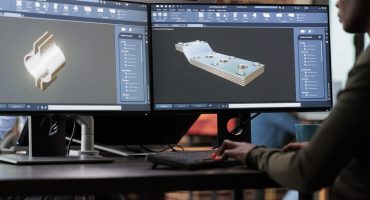
Introduction AI Tools to Convert 2d to 3d Images: A Game-Changer in Digital Transformation
The world of technology is evolving at an unprecedented pace, and one of the most exciting advancements in recent years has been the emergence of artificial intelligence (AI) tools that can convert 2D images into 3D models. This innovative technology has a wide range of applications across various industries, from gaming and entertainment to manufacturing and architecture. In this article, we will explore the best AI tools available for converting 2D to 3D and how they are revolutionizing the digital landscape.
- DeepMind’s WaveGAN:DeepMind, a subsidiary of Alphabet Inc. known for its pioneering work in AI research, has developed WaveGAN, a cutting-edge tool that specializes in converting 2D images into highly detailed 3D models. WaveGAN leverages generative adversarial networks (GANs) to create stunningly realistic 3D representations from 2D source material. Its ability to generate intricate textures and lifelike depth has made it a game-changer in the field of digital art and animation.
- NVIDIA’s GauGAN:NVIDIA, a powerhouse in the graphics processing unit (GPU) industry, has introduced GauGAN, an AI tool that excels at turning 2D sketches and drawings into immersive 3D scenes. GauGAN leverages the power of deep learning and neural networks to add depth, lighting, and realism to 2D input. This tool is a favorite among digital artists and designers for its ability to quickly transform their creative ideas into fully realized 3D environments.
- Adobe’s Project Felix:Adobe, a household name in the creative software industry, has ventured into the 2D to 3D conversion arena with Project Felix. This tool seamlessly integrates with Adobe’s suite of design software and allows designers to convert 2D graphics and illustrations into 3D objects with ease. Project Felix simplifies the transition for designers already familiar with Adobe’s ecosystem, making it a valuable addition for creative professionals.
- Blender’s Grease Pencil:Blender, an open-source 3D computer graphics software, has incorporated the Grease Pencil tool, which facilitates the conversion of 2D drawings into 3D models. This tool is not only free but also highly customizable, making it a top choice for artists and hobbyists looking to experiment with 2D to 3D transformations. Blender’s Grease Pencil showcases the potential of open-source software in the AI-driven world.
- Unity’s ArtEngine:Unity, a leading game development platform, offers ArtEngine, a powerful AI tool that assists game developers in transforming 2D assets into 3D game worlds. ArtEngine’s ability to automate the conversion process accelerates game development and reduces the need for manual 3D modeling, making it a valuable asset for the gaming industry.
- AutoDesk’s Recap Photo:AutoDesk, a major player in 3D design and engineering software, provides Recap Photo, which leverages AI to convert 2D photographs into detailed 3D models. This tool finds applications in construction, architecture, and real estate, where accurate 3D models of physical spaces are crucial. Recap Photo streamlines the process of digitizing the physical world and has become indispensable for professionals in these fields.
Conclusion
The emergence of AI tools for converting 2D to 3D has opened up new possibilities across industries, from entertainment and design to engineering and construction. These tools empower artists, designers, and professionals to transform their ideas into immersive 3D experiences more efficiently and accurately than ever before. As AI technology continues to advance, we can expect even more impressive developments in the field of 2D to 3D conversion, further propelling the digital transformation of our world. Whether you’re a creative artist or an industry professional, these AI tools are invaluable resources to explore and incorporate into your workflow.


















Leave a Comment